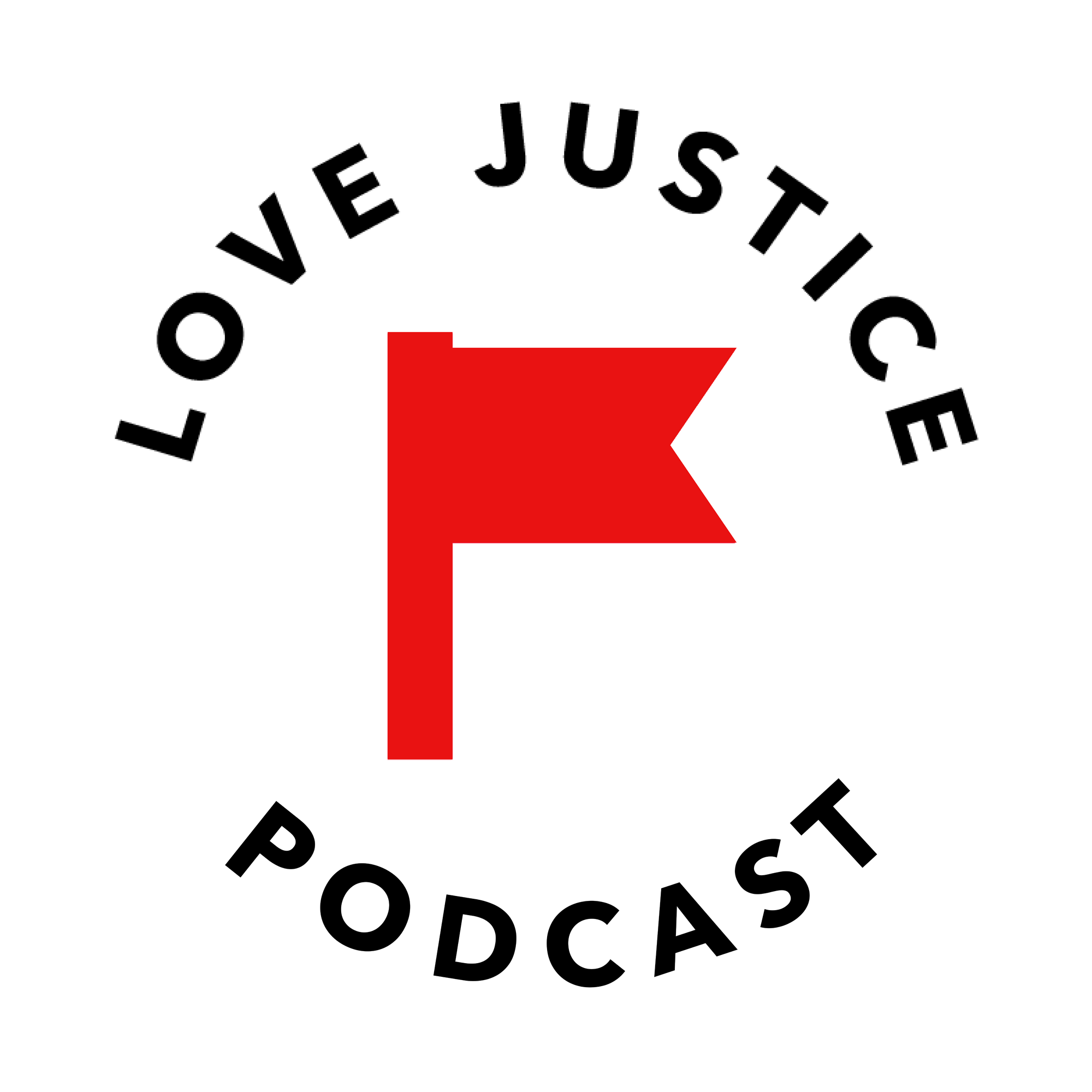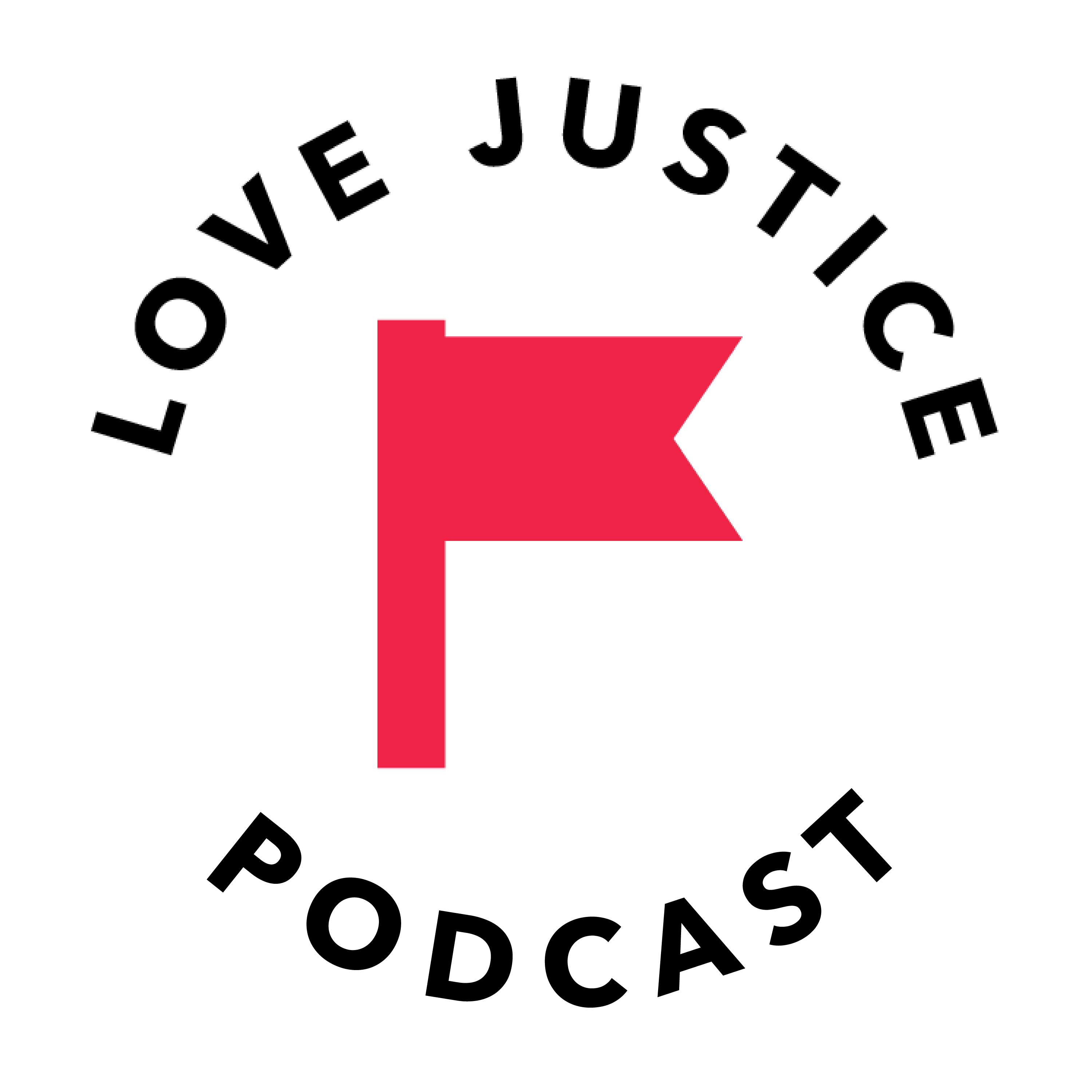Episode Transcript
[00:00:02] Speaker A: Welcome to the Love justice podcast, where we hear from different voices who are joining us in the fight against modern day slavery. Please welcome today's guest, Kirk Schweitzer.
[00:00:16] Speaker B: Well, hey, welcome to this episode of the Love justice podcast. My name is Jason Dukes. I'm with my co host, Hannah Munn. Hannah, how are you doing?
[00:00:26] Speaker C: Doing well.
[00:00:27] Speaker B: We have, as our special guest today, Kirk, as you see on his name there, Kirk, tell us a little about who you are and what you do with love justice.
[00:00:39] Speaker A: Thanks, Jason. Yeah. My name is Kirk Schweitzer. I have been with love justice just over ten years. And ten years ago, I moved to Kathmandu, Nepal, and spent the first nine years of my work with love justice living and being based out of Kathmandu and was directly involved with our ancestors. Trafficking work primarily. I now work as chief of staff, but at the time I joined, I was working within the context of our anti trafficking work.
And I'm now based in South Africa, and I've been here over the last year.
[00:01:12] Speaker B: I love it. I love it. Well, you definitely have had a long tenure. Both of you have. Have had a long tenure with the organization.
And so because of that, you even walked through a season where we rebranded. Right? We used to be called something else and now called love justice International. And so in that rebranding, this red flag became a centerpiece. It became kind of an essential icon that, in a lot of ways, identifies not just who we are, what we do, but even metaphor, even metaphorically, has some real implications into the type of work we do. So, Kirk, maybe start by just saying, hey, what's the origin of that? Like, where did the red flag really come from?
[00:02:03] Speaker A: Yeah, sure.
So, at Love justice, we talk a lot about core processes internally, and one of our first and perhaps one of our best core processes is what we call the intercept record form. Internally, we just call it the IRF, the intercept record form. And from the beginning, that form, the first page of that form documented and outlined what we would call red flags. And let me just back up for a second and say that when we train people, when we train monitors on how to monitor, we distinguish a couple things. The first thing is that they're first looking. They're at the bus station, the train station. They're looking for what we call signs of trafficking. And we distinguish this because these signs are not just indicative. It's 100% chance that this is a trafficking case. It's a sign of. Maybe it's the older man traveling with the younger girl at the border crossing in Nepal, or, you know, it's going to be different for each contact, but it's a sign. It's an invitation for them to start a conversation and find out more what's going on. The red flags come out in the context of that conversation and interview, when they're saying, hey, what's going on here? And the younger woman says, oh, you know, I'm going to deli, and then I'm going to fly to a Gulf country for a job. But then separately, that older man communicates to one of our staff and says, oh, we're just going to go shopping across the border. There's a contradiction there. And that's one example of a red flag. There's many examples of red flags that our staff are trained to look for.
And so those red flags from the very start of our transit monitoring work have been documented on this IRF in our what really gives validity and what spells out why, why, and when we intercept.
[00:03:51] Speaker C: Yeah, thanks, Kirk. I think an important connection to just going back to the IRF is in our last episode, John, or in one of our most recent episodes, John talked about our core competency, and our core competency being finding the right people in places and giving them the tools to maximize mission impact. And so that IRF is one of the tools that we use to maximize mission impact. And every intercept our teams in the field make have an IRF to go with that intercept. So just a piece of context there.
Can you just tell us a little bit more about what are the types of red flags that our team are looking for?
[00:04:30] Speaker A: Sure. Yeah. So our red flags on our current form, really, and to summarize it, they really all fit under one umbrella. And it's what we call internally that we're looking for illegitimate means of control. We're looking for in this traveler crossing a border or moving through a bus station, a train station, airport. How are they moving and what is influencing them in their movement? Are they going to seek a job and it's on their own volition and they're making those decisions, or is there somebody behind or even with them that is coercing them or that has presented a job opportunity that's too good to be true? Are they being coerced in a certain way? Have they been promised something that's not realistic? A lot of our, what we call the red flags relate to those types of elements and how they're moving and why they're moving. The last thing I'll say about red flags related to your question, too, is we have established a point value. Not every red flag is the same.
There are some point values of red flags that will just ratchet this interception situation to the top. And we say, okay, this is a serious situation. An example of that would be, we've seen in Nepal, sometimes potential victims are drugged and drowsy when they're crossing the border. Traffickers just want them to be kind of out of it. They're not communicating. So that's an example. If we see that, that's ten out of ten, we're wanting to intervene and we're involving the police if we can. Others are, they're not as. So we're looking for the accumulation of red flags to justify and intercept.
[00:05:59] Speaker C: Just a piece of fun information for our listeners is that we actually put this logo on some black shoes that every single one of our monitors in the field are wearing as a part of the symbolic coming together, standing on the front lines, looking for these red flags of trafficking that our monitors now have, I think, on the insoles of their shoes, just as a reminder of why they're doing what they're doing.
[00:06:26] Speaker B: Yeah, it's super cool.
I was even speaking somewhere recently in Austin, Texas, and I had on a golf shirt that just simply had the red flag on it and pointed at it several times, and you could see it translate to the audience, just not only about what we're doing in the anti trafficking work, but even about the broader mission of who we are and what we do. Kirk, maybe speak to that as we wrap up here, to how the red flag is even indicative of just the broader mission of what we do.
[00:07:00] Speaker A: Yeah, yeah. Our mission is sharing the love of Jesus Christ by fighting the world's greatest injustices. And within our anti trafficking work, when we see a red flag, it's a situation that we believe that trafficking is occurring, which we believe to be one of the world's greatest injustices.
But it doesn't just apply to our anti trafficking work.
What we call one of our global values is to treasure impact opportunities within that global value. We talk about searching out the least of these.
So much of our work is aimed towards the least of these, because that's where the greatest injustices in the world are striking and hitting. It's those people. And so we're looking for those, whether it be anti trafficking, whether it be our monitors trained to observe and find those red flags, or any other of our staff in their roles, we are searching out those red flags to identify the least of these. And we've learned to treasure impact opportunities because they're rare and they're hard to find, and they're hard to find at scale as well. And so we want to take advantage. When we do find, when we do find those flags, we do see that this is a situation where we can have an impact.
That's a flag for us.
[00:08:13] Speaker B: I love it. Well, I was sharing a little bit about our mission with someone here in the states recently.
I got a one line email back, and she said, I'm in awe of the work that LJI does, comma, so how can I help?
And I think the red flag, to me, as I use it, even in communicating with people, it just grabs attention. People recognize it. It's not only an icon that is something that draws your eye, which even marketing people will tell you that red on white and red on black really catches your eye. But the fact, like you said, that it is a part of who we are, our mission overall, the red flags that we're looking for, in order to see what are those injustices and who are the vulnerable that we want to care for and go near to and seek to eradicate these things and these injustices. And so I think it's important. I think it's such a huge statement.
I think it not only is a huge statement externally, from a marketing standpoint, but such an incredible culture shaper for us internally. And so I hope all of us can be aware of looking for those red flags, even as a listener or a viewer, even if you're looking for the red flags in your own everyday life, or you're looking for someone that's down and out or that's hurting, or that feels broken inside, or you're looking for the injustices around you in your local community. But we want to be people who notice those red flags and then who pay attention and take action on them. Final words from you guys before we. Before we wrap up.
[00:10:05] Speaker C: Jason. Just some of what you're sharing also reminds me of one of our global values, which is working with emergency effort and working as if it were the person we love the most. And I think that that also can be captured in the compellingness of the logo that you were talking about. Compellingness isn't the right word that I'm looking for, but the catchiness of it reminds me of what does it look like to work in emergency effort, even in those situations that you described outside of the context of our work? Like it was the person that we loved the most. And that is so much of the heart of not just our program staff, but our monitors and teams in the field. And that is so difficult to convey on their behalf without having our listeners, our donors, our community go and see it for themselves, which we hope they would one day. But yeah, that just reminded me of one of our very important values.
[00:11:03] Speaker B: That's awesome. Well, thank you, Kirk, for joining us and, and how you, both of you really, how both of you embody those values that you were just talking about, how both of you lead out and encourage so many of our heroes, so many of our transit monitors, so many of our others that are a part of the different ways that we're fighting injustice. And so just grateful for you two.
And as a listener viewer, if you're interested in learning more about our red flag, about the impactful work that we do and the red flags that we know notice, you can go to our impact page on our website, lovejustice dot Ngo, and and look forward to our next episode coming up. But again, Kirk, thanks, Hannah. Always so special to be on with you and we'll talk to you guys next time.
[00:11:57] Speaker A: We are grateful for the generous support of the love justice community. Please consider joining our family of donors. Learn more at lovejustice NGo.




